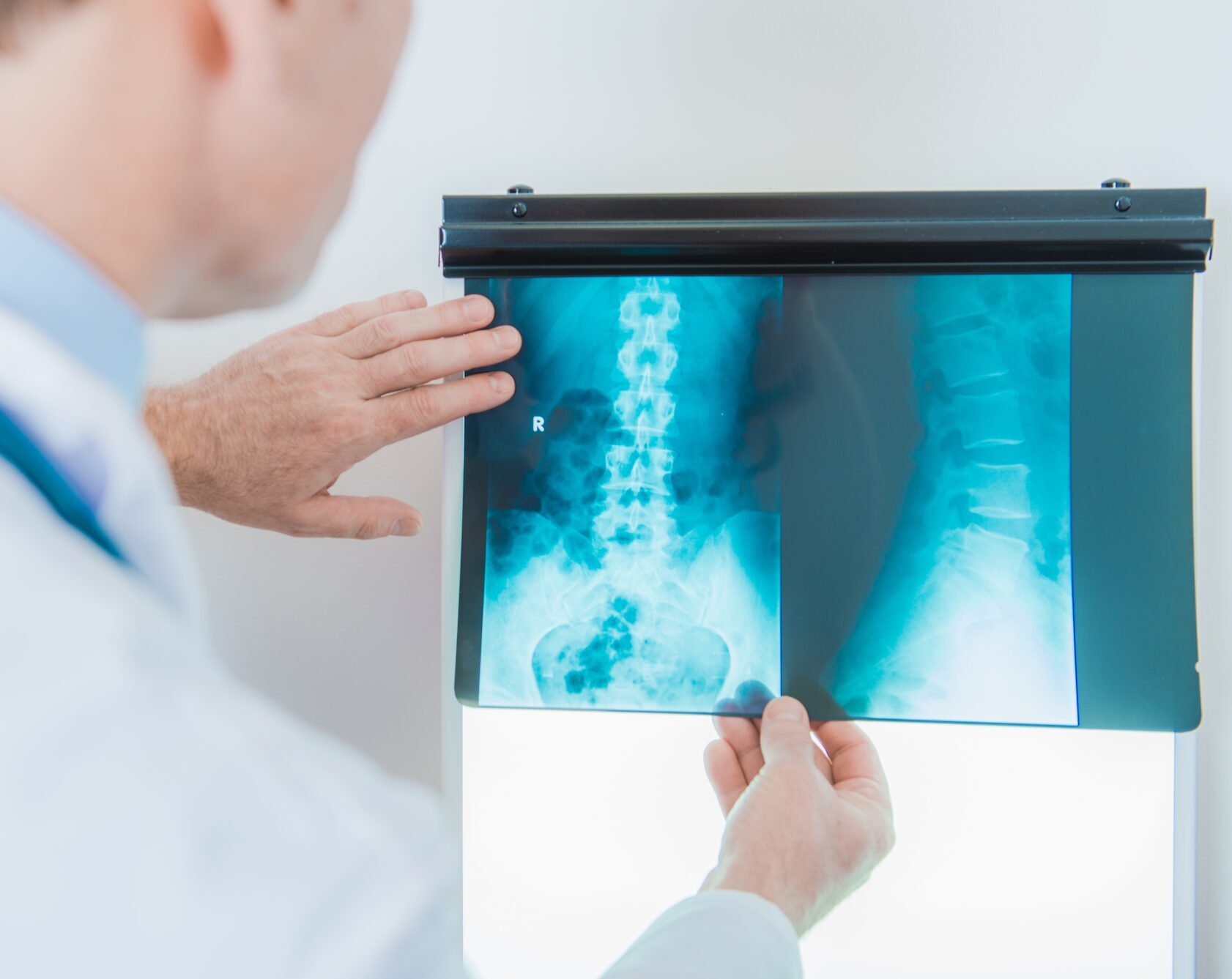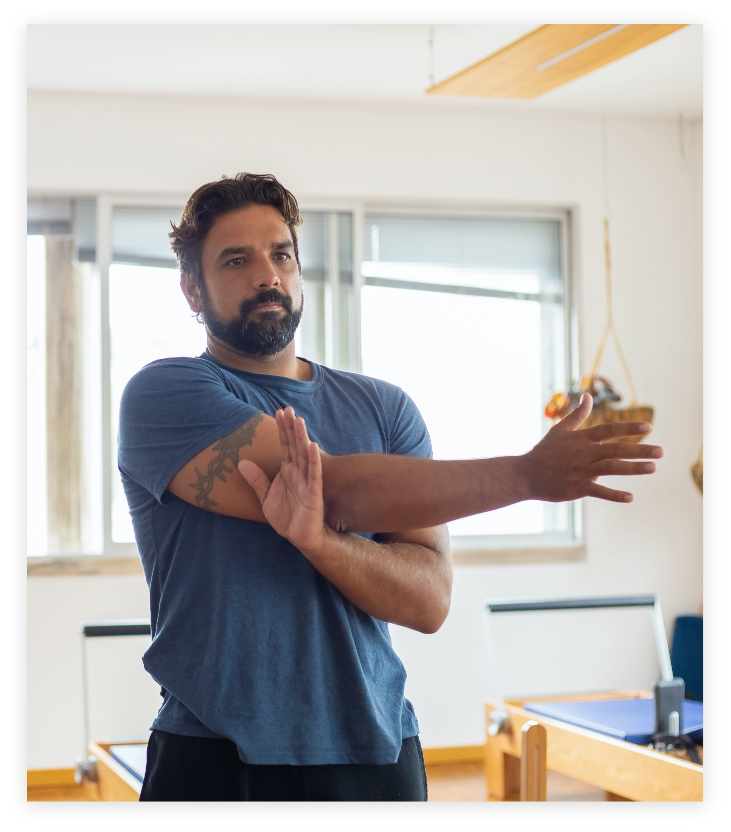

The nerves in your spine control how you move and navigate the world. Most of the time, these nerves operate comfortably in the spinal canal. However, when the canal narrows, which is often caused by a bone or disc pushing against it, the nerves become trapped and can leave you in pain. As long as there is pressure on your spinal canal, you will have difficulty moving and may experience symptoms like numbness and tingling in your spine or extremities, so something will need to be done to reduce this pressure.
A lumbar laminotomy is a procedure to reduce pressure on the nerves in the spinal cord. A laminotomy is a partial removal of the bones that protect your spinal canal. This creates space in your spinal canal for your nerves to operate at their best.
Dr. Todd H. Lanman, leading spinal neurosurgeon and founder of the Advanced Disc Replacement Spinal Restoration Center, works with patients from all walks of life who are experiencing back pain including Hollywood celebrities, C-Suite executives, and patients across Beverly Hills and Miami. If you are experiencing back pain, he may recommend a lumbar laminotomy to reduce the pressure on your spine. Learn more about this procedure and whether it could be right for you.


Reasons for a
Lumbar Laminotomy
There are many reasons why Dr. Lanman would recommend a lumbar laminotomy; however, this surgery is most commonly used to treat spinal stenosis.
Your spine is made up of multiple bones that run down your back. It also serves as a superhighway for your nervous system. The nerves in your spine control how your body moves and what you can feel. This is why some people with spinal conditions report pain in their legs or tingling in their fingers. With spinal stenosis, the spinal canal narrows, which puts pressure on the nerves in your lower back. Symptoms of spinal stenosis include sharp, jabbing pains in your legs, numbness, and muscle weakness.
Spinal stenosis can be congenital (meaning it presents at a young age) or it can develop as you get older. It mostly affects people ages 50 to 70.
There are other conditions where Dr. Lanman might want to perform a lumbar laminotomy. The goal of this procedure is to relieve pressure in your spine, and multiple sources can cause this. If you are having lumbar disc issues (like a herniated disc) then a laminotomy may create space for your nerves. With a herniated disc, one of the protective cushions between your vertebrae gets pushed out, hitting your nerves and causing back pain. Depending on your needs, Dr. Lanman may recommend artificial disc replacement or a lumbar laminotomy.
A laminotomy can also be used to create space in patients that have tumors or cysts along the spine. The ultimate goal is to make patients more comfortable.


What is Lumbar Laminotomy
A lumbar laminotomy refers to the partial removal of the lamina in the lower part of your spine. Your spine is made up of different regions. The vertebrae near your neck are part of the cervical region, the middle vertebrae make up the thoracic region, and your lower spine is the lumbar region. Each vertebra is made up of multiple parts. The lamina is an arc of bone that protects your spinal canal. By removing the lamina, the spinal canal can expand because this part of the bone is no longer pinching or crushing the nerves near it.
Talk to a spinal neurosurgery specialist like Dr. Lanman if you have a dull pain in your back throughout the day, sudden sharp pains that are unexpected, numbness or tingling in your arms or legs, or reduced range of motion in your spine. Your specialist can diagnose the issue and determine whether lamina removal is the best choice for your individual needs.


Lumbar Laminotomy
vs. Laminectomy
There are two types of lamina removal surgery used to relieve pressure on the spine. In a laminectomy, the lamina is almost completely removed from the vertebrae. In a laminotomy, only part of the lamina is removed. Both procedures are used to treat spinal conditions based on the patient’s needs and the recommendations of Dr. Lanman. Most frequently, a laminectomy is used to reduce pressure caused by arthritis or spinal stenosis. A laminotomy is used to treat a herniated disc.
A laminotomy is considered less invasive than a laminectomy. Your surgeon doesn’t need to access the full lamina to remove the none. Instead, Dr. Lanman only needs to reach the part of the lamina that he plans to remove. This means the surgical incision is smaller, which can reduce the chances of infection and speed up the recovery process.
Your spinal cord is still safe without a lamina. Dr. Lanman will likely only remove the lamina of one vertebra, leaving the other 23 vertebrae intact. Additionally, the muscles in your back can also protect your spinal canal in the absence of a lamina in one of your bones. Because the laminotomy only removes part of the lamina, the spinal cord remains even more protected than it would be with a full laminectomy. All of these factors contribute to your chances of a full recovery to live with reduced pain and an improved range of motion.
As a patient, you don’t have to be an expert on a laminectomy versus a laminotomy. Your job is to seek treatment when you experience back pain and other lumbar issues. Let your surgeon determine which procedure is best to give you the highest chances of success.


What to Expect During a
Lumbar Laminotomy
Surgery and Recovery
If Dr. Lanman believes you are a good candidate for a lumbar laminotomy, he will walk you through the procedure – including the preparation process, surgical duration, and post-operative instructions.
To prepare for surgery, avoid eating or drinking for 8 hours before your operation. You may need to stop taking certain medications for a day or two before the scheduled procedure. Dr. Lanman will ask you to find someone to bring you to the Advanced Disc Replacement Spinal Restoration Center and to take you home.
All of the operations done by Dr. Lanman are outpatient procedures that are completed in the surgical center. This means you won’t have to check into a hospital or stay overnight for your lumbar laminotomy. Patients can go home on the same day as their surgical appointment.
The lumbar laminotomy will last a few hours. You will be unconscious during the procedure through the use of general anesthesia, which means you will not feel any pain. Dr. Lanman will make an incision into your lower back and will move your muscles out of the way as needed. He will remove the affected lamina and address any additional spinal issues in that part of the body (like a herniated disc). This is a minimally invasive surgery, rather than an open procedure.
Once the operation is done, Dr. Lanman will close the incision and you will enter the recovery room. After a few hours of close monitoring, you will be discharged from the spinal center. From here, your recovery process begins.
Dr. Lanman will provide a detailed list of ways to care for yourself after surgery. However, a few basic steps include using ice packs to reduce swelling, getting up to move around frequently, avoiding too much bending and lifting too early, and completing basic physical therapy exercises.
Each patient’s recovery is different. It may take you more time to recover than others depending on your operation and your body. Follow your recovery instructions and don’t rush the process.
Lumbar Laminotomy Success Rate
Both lumbar laminotomy and laminectomy surgeries have high success rates. Today’s surgeons continue to identify ways to make these procedures less invasive for patients while decreasing the chances for infection and other complications. Research suggests that 85 to 90 percent of patients who undergo lamina removal surgery experience pain relief after the operation. Additionally, 75 percent have satisfactory outcomes for up to 10 years after the operation.
While the results are promising, there are still some risks with these operations. Roughly 10 to 15 percent of patients may need subsequent surgery because of post-op complications.
Fortunately, Dr. Lanman works carefully to decrease the chances of surgical complications. He uses his diagnostic expertise to understand your unique case and complete health picture, as well as the most advanced tools and techniques to make the procedure less invasive. His decades of experience as a leading spinal neurosurgeon increases the chances of positive patient outcomes and long-term success.
Lumbar Laminotomy FAQs
Can you work a week after lumbar laminotomy?
While a lumbar laminotomy is an outpatient procedure, the recovery time for most patients is about four weeks. You may be able to complete basic movements in the week after surgery but should not return to work until you have recovered – especially if your work involves high levels of movement, bending, and lifting.
How long does it take to fully recover from a lumbar laminotomy surgery?
Every patient is different, which means your recovery time could be longer or shorter than others. However, Dr. Lanman recommends taking four to six weeks to recover from surgery. Carefully following post-op recovery instructions can decrease the chances of infection and complications that can make the operation less effective.
How much pain will I have after a lumbar laminotomy?
There is some pain involved in a lumbar laminotomy. Patients often report that sitting is one of the least comfortable positions following lumbar surgery. Your doctor may be able to recommend medication to reduce discomfort and will provide exercises to help you with the recovery process.
Reach Out To Dr.
Lanman If You Have
Lower Back Pain
If you experience pain in your lower back, especially pain that seems to travel to your legs, request a consultation with Dr. Lanman. Other sensations, like tingling or numbness in your legs, could also be a sign of a spinal injury or disease. Dr. Lanman can evaluate your spinal health and make recommendations so you can live with reduced pain levels without sacrificing your range of motion. Request a consultation today and take the first steps toward living comfortably again.
Ready to reclaim your life? Get in touch with Dr. Lanman Today.
FOLLOW US ON SOCIAL MEDIA | @ADRSPINE



